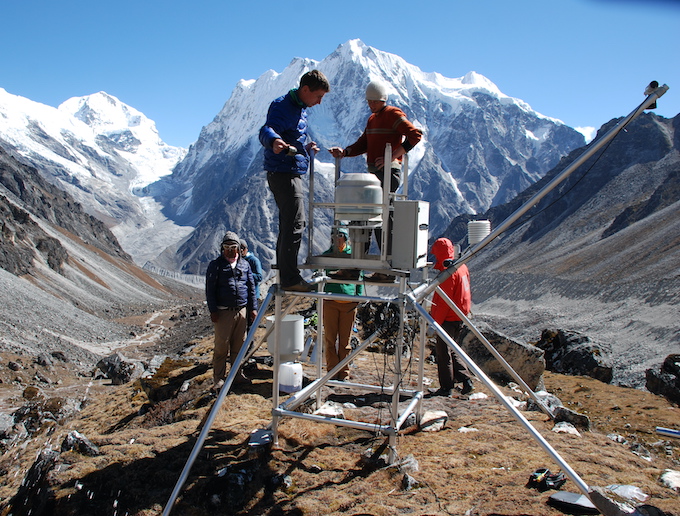Characterising the water tower of Asia
High mountain Asia(opens in new window) (HMA), including the Himalayas, is Asia’s water tower. Water is stored in snow and glaciers, and 10 major rivers, including the Ganges, originate here. As around 20 % of the world’s population live in river basins below the HMA, understanding high altitude water cycles is critically important. Changes determine water supply but can also cause damage, such as the recent Uttarakhand flood(opens in new window). Yet, the region’s remoteness and inaccessibility make measurements of glacier, snow, mountain weather and hydrology difficult. The CAT project(opens in new window), supported by the European Research Council(opens in new window) combined high-altitude field observations with remote satellite sensing of glacier mass and snow. “We were also the first to use drones to monitor glacial dynamics, now widely used in the region,” explains Walter Immerzeel, professor of Geosciences at the University of Utrecht(opens in new window) and coordinator of the EU-funded project. This data informed detailed hydrometeorological models able to make projections of the likely hydrological impact of climate change-induced changing mountain weather patterns. Early project results fed into a key study, published in ‘Nature’(opens in new window), which found that even if the 1.5 °C threshold is met, 36 % of the ice volume will disappear by the century’s end. If not met, CAT’s projections ranged between 49 % and 64 %. Additionally, as HMA warms more rapidly than the global average, a 1.5 °C increase globally would result in a 2.1 °C regional increase.
Glacier areas, volumes and changes
The CAT team focused particularly on rock and sediment debris covered glaciers, prevalent in the Himalayas. The debris impacts melt rates, as thick layers insulate ice, reducing melt; while thin layers darken the surface, reducing surface reflection and so accelerating melt. Drones were flown every 6 months to survey the glaciers. The data was used for models that reconstructed the surface elevation of the glaciers and tracked changes and variability in melt. A network of precipitation gauges took rain and snow measurements. Measuring snow properties such as sublimation(opens in new window) rates, temperatures and depths helped establish the interaction with atmospheric variables and speed of melting, crucial for validating atmospheric simulations. “By understanding how large-scale atmospheric weather patterns, alongside debris-covered glaciers and snow sublimation, influence the high-altitude water cycle, we can learn how glaciers and snow packs in the region will likely respond to climate change and impact water availability,” adds Immerzeel. Contrary to expectations, a key finding was that climate change will result in more water in the coming decades as glacier melt and precipitation increase. Another finding relates to an HMA region where the Karakoram, Pamir and Kunlun Shan mountain ranges meet and where the glaciers are growing and gaining mass. “This was caused by increased irrigation using groundwater reserves. We showed how in the Tarim Basin in China, irrigation directly impacted glacial growth as more water evaporates and atmospheric moisture increases, causing more clouds and snowfall in the mountains,” says Immerzeel.
Preparing for extremes
The team is now working with the www.icimod.org (International Centre for Integrated Mountain Development) in Kathmandu, a knowledge institute of key decision makers. A notable outcome is ‘The Hindu Kush Himalaya Assessment: Mountains, Climate Change, Sustainability and People’, a flagship report featuring CAT’s findings. “The key regional challenge is dealing with mountain weather extremes, potentially bringing more floods, landslides and glacier collapses. I am now focused on the role of climate change and the increased vulnerability of people and infrastructure,” concludes Immerzeel.







